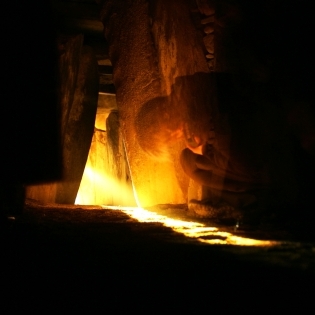 Nut grafs or otherwise relevant excerpts from entries which appeared last year at this time.
Nut grafs or otherwise relevant excerpts from entries which appeared last year at this time.
•
•
•
•
•
•
•
•
2009
• Neurodiversity, Neuropsychology and Evolution
Not unlike the experience of traveling to little-visited, far-flung corners of the earth and finding surprisingly similar myths describing origins of local culture; we find ourselves filled with a similar wonder upon traveling to little-visited academic sub-disciplines. Just as two far-apart aboriginal cultures might have no contact with each other, the heterochronic practitioners of evolutionary biology have little traffic with the neuropsychological theorists who may be located less than a hundred yards away in another building on the same campus. Strangely, we find these different scientists discussing identical processes in different terminologies with almost no published awareness that they have much in common.
How might two different scientific disciplines be discussing the same natural dynamic and not know it, like two aboriginal societies fearing menstrual blood half a world apart, unaware of another culture with the same belief?
The followers of heterochronic theory, tucked within the discipline of evolutionary biology, follow the influence of the relative rate and timing of development and maturation on species transformation. These theorists believe they have discovered a shortcut in the process by which Darwin’s selective processes, natural selection and sexual selection, cajole and curtail the way species transform and go through metamorphosis. The concept is elegant. Instead of waiting for chance mutations or unusual random variations, the selective processes act to retain specific useful features characterized by changes in maturation. A simple variation in, for example, the speed with which an individual can reach maturity, could mean that this faster-growing individual could defend himself or herself against a threat to which another, slower-developing individual might yield to. By passing on this ability to grow faster, this individual’s progeny would also have an increased chance to survive.
Autism researchers such as Simon Baron-Cohen have noted a pattern. The mother’s testosterone levels influence the likelihood of a child having autism. The higher the mother’s testosterone level, the more possible the child will be autistic. The work of the late Norman Geschwin in the early 1980s paved the way for this understanding. Still, the context in which the mother’s testosterone level makes sense is still not pursued by researchers seeking to understand the origins of autism. Neither Baron-Cohen nor Geschwin have backgrounds in evolutionary biology, which might have provided them an introduction to arcane nineteenth century alternative theories of evolution. We all suffer the effects of a century of obsession with Darwin’s theory of natural selection.
One of the patterns that a commitment to natural selection masks is that evolution can happen extremely quickly, in a single lifetime. Darwin was aware of single-generational change and struggled for an explanatory principle. He called his theory pangenesis. According to pangenesis, the body manufactures gemmules that can carry information informing the body of environmental change, which the body responds to, modifying progeny in response.
We call them hormones.
This claim, passed on to the referees, becomes a formal challenge. The spectators wait expectantly as the player is given an opportunity to produce a BIA identification card or otherwise prove himself a registered Indian. He cannot, and is ejected from the game. The crowd jeers him off, and as play resumes, one of the BIA officials nods his head thoughtfully and says, “I think we’ve finally won.”
The picture then, if you’re missing it, is of members of a once-sovereign nation insisting on the authority of their conquerors to validate or deny their identity as members of their own nation. While their ancestors may have played by that conqueror’s rules grudgingly, these players and spectators are willing collaborators, playing a white man’s game literally, figuratively, and enthusiastically—with no felt need to challenge or subvert the terms of that game. They need no prompting to invoke the authority that excludes one of their own from a supposedly communal event. When it comes to the task of staying divided and conquered, they have become self-starters.
The Autistic Nation, I suggest, is similarly divided when we agree that there is more than nominal meaning to the fact that only some of us are “registered Indians.” Rather than a BIA identification card, some autistic bloggers have been reduced to posting a scan of their autism diagnosis, a “note from the doctor” in order to prove that they know whereof they speak. Others are derided and discredited for speaking about autism from the perspective of self-diagnosis. Most of the demand for this sort of “certification” may come from those who do not identify as autistic (at least not openly), but insofar as any of us take such demands seriously, we remain a house divided, by our own hands.
Mark Stairwalt on 11/1/10 in Art/Play/Myth, featured | No Comments | Read More

